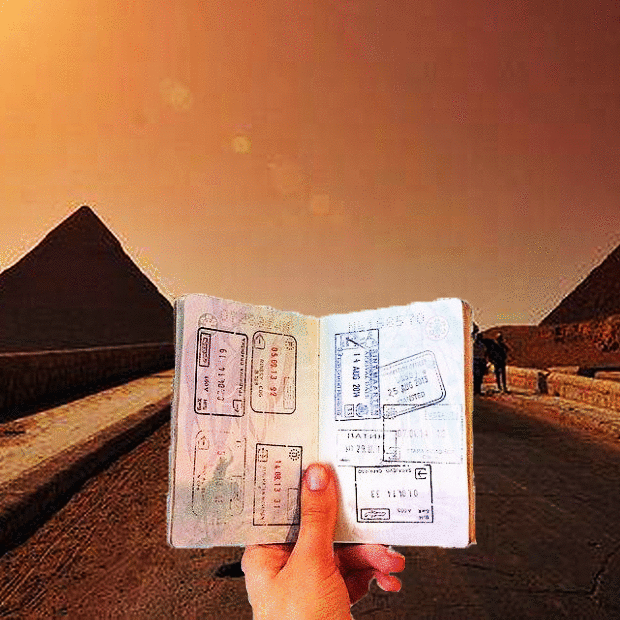Breaking down the cost to study abroad
Exotic foreign locations, hip university scenes… There’s a lot to be geeked about when you decide to study abroad. In the midst of all the excitement here’s one thing you’ve got to be clear on—your study abroad program fees! Yep, understanding what’s included in your study abroad fees is crucial. There’s a common misconception that the cost of studying abroad is just your program fee.

Studying abroad? Research what’s included—and what’s not—to be best prepared!
However, there are study abroad costs that will fall inside and outside of your program fees. Getting a handle on what is included allows you to calculate how much more you’ve gotta fork up! Ready to break your study abroad fees down? Let’s make sense of it all and kick start your study abroad off right.
Know this: Study abroad fees vary
Depending on the type of program that you choose, your study abroad costs can range from next to nothing to the equivalence of a small fortune/investment. Here’s a quick and dirty overview:
Generally speaking, direct-enrollment into a foreign institution and other, more independent style programs, like language schools, are cheaper. The more services incorporated, the higher the price goes. Third-party program providers tend to charge premiums for their support and the ease of coordination throughout the whole process—not to mention top-notch guidance. University provided programs tend to run the same cost as a semester on your home campus (which can be multiple thousands of dollars). The bright side there is that your financial aid and scholarships generally carry over, even though you’re not technically taking classes at the school that semester.
How to figure out YOUR study abroad fees
So, you’ve picked your favorito study abroad in Spain program. Don’t start filling out applications just yet though. Your first order of business is finding the cost to study abroad! You’ll want answers to questions like, “How much is study abroad?” or "How expensive is studying abroad?” Here’s how to find out:
- Find out your program-specific study abroad fees. Pull up that study abroad program literature. Then keep your eyes peeled for a section like “program fee,” “what’s included in your program fee,” or “study abroad expenses.” That’s where you’ll find a list of what will be covered once you pay for your program. Have questions about something you see? Feel free to email or call the program advisors for clarification.
- Chat with your high school or college counselor. These guys are also your go-to program fee gurus. Need help understanding your study abroad pamphlet? Think you’ll need financial aid to pay for your studying abroad tuition? Make an appointment with your guidance counselor and financial aid officer. They’ll help you make sense of your studying abroad expenses and provide great guidance.
If you haven’t picked your program yet, we highly recommend you use program fees as a factor to consider in your decision making process. Be picky about what certain programs include and don’t include, and do some self-reflecting on what your needs are and what you’d be willing to pay for them.

Check yo’self before you wreck yo’self… AKA make a budget!
What do study abroad fees generally cover?
So your heart kinda skipped a beat at finding out your study abroad tuition. Zoinks! You’re probably wondering why is the price of studying abroad soooo high?! How could hosting little ‘ol me cost so much money?”
Well, it takes a lot to keep study abroad experiences smooth sailing. Rest assured, the cost of study abroad programs rarely goes to waste. Your program fees go toward stuff you can and can’t see. Here’s some examples:
Visible study abroad program expenses:
- Student meals (#nomnomnom)
- Your dorm room/accommodations/homestay
- Study abroad tuition costs, such as courses and textbooks
- Excursions and cultural activities
Invisible study abroad program expenses:
- Program staff (e.g. drivers, advisors, resident staff) salaries
- Gas for your campus bus
- General program administration costs
So yeah—your study abroad fees are a lifeline of your experience. Now let’s dissect exactly what is covered in study abroad tuition. Once you understand that, you’ll know how much extra you need to budget.

Sell some old knicknacks—every penny counts!
A more concrete list of items often included in your fees*
Without further ado… here’s our rundown of general studying abroad expenses. Some of these costs will be covered under your program fee, while others may not. And remember: what’s included in your program fees will vary program to program.
- Advisory and guidance services. Student advisors will be an important part of your study abroad experience. They assist with everything from leading your orientation to helping you with cultural adjustment. Their services actually begin before you even land in-country. This is generally an amenity built right into your study abroad program fee.
- Classes and books. Your classes and books fall under study abroad tuition as well. So, as long as you’re all paid up, you can attend classes. Now, enrolling in any extra classes probably will not be covered so you’ll have to pay separately.
- Visa. Visas are your access pass into the country you’re studying overseas in. It’s an immigration document that says you’re legally allowed to study in the country. Most countries charge a fee for foreigners to apply for student visas. Some programs include visas in their study abroad fees, while others don’t. You will have to check program literature carefully to know if your visa is an additional expense to plan for.
- Housing. Study abroad accommodation (including utilities) will likely be covered under your program’s price of studying abroad. That’s unless you decide to get your own crib. And in that case, you’ll have to pay rent on your own. So stick with the program housing to keep study abroad costs low.
- Transportation. The amount of transportation covered in study abroad program fees depends on the program. Some programs will cover transportation to and from the airport. However, you may have to budget and pay for local taxi rides yourself. Your advisors will give you details on how much you have to pay for day to day transport. Planning your own weekend trip to Ghana’s Cape Coast? Your ride probably won’t be included under your program fees.
- Airfare. Flights are another fee that vary program to program. It’s often one of the biggest study abroad expenses so expect to find clear cut info about whether it’s included under fees. Also get clarity on who (you or them) will book your ticket.

Is transportation included? Double check with your program provider!
- Phone and internet. Do you have to be constantly plugged in and connected? Then definitely ask if internet and phone service is included in your program fees. You might have access to free campus wifi and receive a free phone. Or, you may have to pay for your own data and bring your own cell. If tech related amenities aren’t mentioned in program literature, contact your advisors for more info.
- Grub. Most study abroad programs are not interested in hosting fungry students! So, you’ll probably have at least two to three meals per day included in your program fees. Now, snacks for late night cravings? You can generally expect to pay for those separately, although some amazeball programs actually keep fridges stocked with snackage! Ask your advisors for food specifics in your program. Then you can budget for how any extra food you’ll want to keep.
- Program sponsored excursions. Most study abroad organizations schedule lots of trips right into your program. A portion of the costs might fall under your program’s study abroad costs. Other programs may ask you to pay separately for traveling expenses like safari entrance fees or overnight accommodation. Study abroad providers will give you the deets on what you can expect to pay during excursions.
- Orientation. This is 99.9999% going to be included in study abroad program fees…complete with meals, snacks, activities, welcome materials and more. All you’ll probably have to do is show up, get comfy, and get to know your new home!
- Health and travel insurance. Your health and safety are très important during your study abroad! Some programs will include insurance in their program fees. Others will require you to purchase it separately. Health insurance will ensure medical expenses like doctors visits are paid for. While, travel insurance can cover anything from lost luggage to a medical evacuation. These are not expenses that study abroad students should skimp out on. So get coverage and travel smart!
- Transcript. Academic records of your study abroad are generally included in study abroad fees. However, cross check with your both school and program to be sure.
* Keep in mind that this list covers the basics of study abroad fees and is not all-comprehensive. There are several other study abroad expenses that will and won’t be included in your program fees. Bottom line? Good communication with your school counselors and the study abroad provider are essential. That way, you’ll know everything you need to know about what’s included in your specific program.
If your program provider can't help guide you on how to get the visa you need, we're here to help!
How to cut your study abroad costs

Maybe get a little side hustle? ?
Okay, first, let’s debunk one myth: that study abroad costs are always astronomically high. Ready for some truth? The cost to study abroad can actually be cheaper than what you’re already paying for school. This is especially the case when studying in a country with a cheaper cost of living. And sometimes, your study abroad tuition is comparable to what you pay at home. So, try those study abroad fees in perspective.
Still feeling uneasy about how to cover the cost of study abroad programs? Breathe… You’ve got lots of options! Check out these ways to cut costs and cover the price of studying abroad.
- Apply for scholarships and financial aid. There are tons of study abroad financial aid and scholarships just waiting to be scooped up! That’s where your financial aid office and school advisors come in—they’ll be super helpful with finding these aid and helping you apply. Fundraising is another option for covering the cost of studying abroad. Our FundMyTravel tool will help get your fundraiser off the up and running in no time!
- Get a part time gig and save. Work study, putting in a few hours a day at your local diner... With proper planning, saving up for study abroad costs is very doable. Your scholarship could cover your study abroad fees, while your job salary could pay for your flight. So open up a savings account, download your favorite budgeting app, and start putting money away.
- Study in a cheaper place. Another way to cut the cost to study abroad? Pick a country with a cheaper cost of living. This will lower the cost of studying abroad with your chosen program.
- Scout free healthcare. Some countries like Denmark offer free healthcare for international students. Let’s say medical care isn’t covered in your program fees and you’re looking to cut corners with costs. Start googling countries that offer free medical insurance for international students. Find a program in one of those countries and you’ll save a chunk on your cost of study abroad.
- Be an early bird. Waiting until the last minute to buy your ticket is a big no-no! That’s because the earlier you book your flight, the cheaper it’s likely to cost. So, if you’re flying out, do not procrastinate on this important step!
- Go local. While in country, try livin’ la vida LOCAL (see what we did there?). Seriously, living like a local is a great costcutter. Skip out on munching at upscale tourist hotspots for meals and opt for street food or the local open market. This will save you money on the price of studying abroad.

Figured out finances? Grab that passport and travel on! ?
Next steps in your study abroad journey
By now, you’ve got a nice overview of what’s typically covered in study abroad program fees. And you’ve got some great ideas for how to make the costs more affordable. Keep the good vibes and planning going with these next steps.
- Make a shortlist of your favorite study abroad programs. If you need help, meet with your advisors. You can also use our MyGoAbroad tool to bookmark programs (and compare them side-by-side—easy peesy!).
- Actually pick a program! It is best to arm yourself with 2-3 options before you…
- Make an appointment with you financial aid office. Think you'll need help funding your study abroad costs? Set aside some time to chat with the folks over at financial aid to explore your options. Also, start looking for a part time job to help cover your expenses as well.
- Start budgeting, saving, and raising money like crazy. Here’s how to pay for study abroad, as well as some little-known fundraising ideas. We’ve got your back.
Don’t let the cost to study abroad hold you back!
Understanding what's included in your study abroad program fees takes a little groundwork. However, if you take time early to hammer it all out, you can eliminate the chances of any study abroad financial curveballs (meltdown much?). It’s time to click open that study abroad website or pamphlet, grab a notepad, and get to researching. Then hit the ground running and study abroad like a boss!
Find low cost study abroad programs now
Look for the Perfect Study Abroad Program Now
Start Your Search


